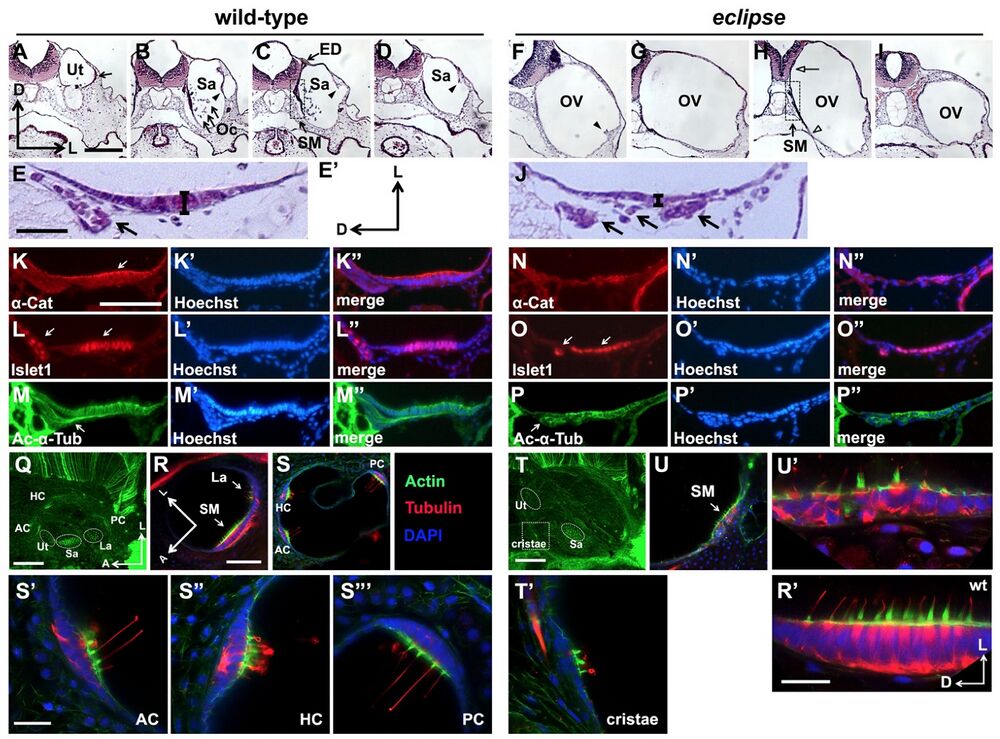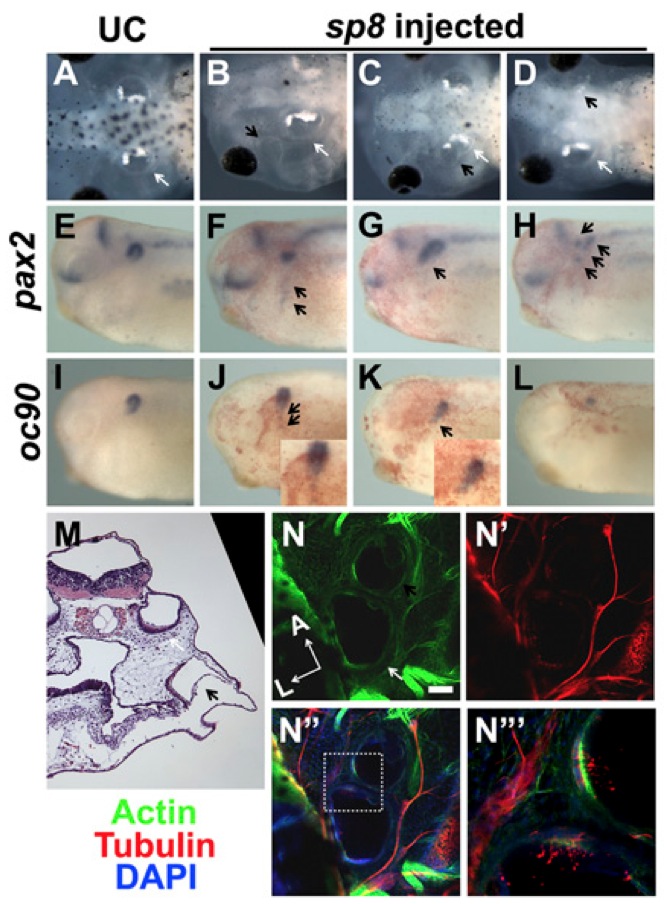Sp8 regulates inner ear development
Chung et al. published in The Proceedings of the National Academy of Sciences that sp8 regulates inner ear development.
Decreased ability to hear and/or maintain balance are common and are often the result of improper inner ear development as well as from environmental causes. Studying the development of the inner ear as it forms helps us gain insight in possible genetic causes for deficits in hearing or balance. This study presents a detailed look in Xenopus looking at otic developmental defects resulting from mutation in a single genetic locus.
Specificity protein 8 (sp8) has been known for regulating limb and brain development, but in this study, an inner ear mutant named eclipse (ecl) generated from ENU-mutagenized Xenopus tropicalis, was found to have alterations in the sp8 gene locus. Ecl mutants grew to tabdpole stage being mostly immobile, swam upside down, or swam in circles. Physically, the tadpoles had enlarged otic vesicles and lacked otoconia. These characteristics all are highly suggestive of inner ear defects.
Closer analysis of the ecl mutants by genotypic linkage mapping confirmed the mapping interval of ecl. This portion of the X. tropicalis genome includes four predicted gene models. Of these four genes, sp8 is present and is transiently expressed in the otic vesicles, the primordium of the ear. Whole-mount in situ hybridization of ecl mutants showed decreased sp8 gene expression in the dorsal otic vesicle in NF stage 26 embryos.
Regional injection of antisense morpholino oligonucleotides (MO) targeting the start codon of the sp8 mRNA as well as TALEN-targeted mutagenesis of the sp8 gene locus recapitulated the phenotype of ecl mutants. Analysis of ecl mutants during early inner ear development at NF stage 46/47 showed significant defects in the structures of the developing inner ear. These defects include enlarged otic vesicles and altered cellular morphology of the inner ear hair cells within the otic vesicle. The hair cells are sensory cells within the inner ear that have fine projections that detect and respond to physical stimulation by sound or pressure and aid in maintaining balance by sensing the movement of otoconia normally contained within the otic vesicle.
Further analysis of marker genes indicative of proper early ear development showed purturbed gene expression in ecl mutants and sp8-MO or TALEN injected embryos.
In contrast, over-expression of sp8 can induce ectopic ear marker gene and ectopic otic vesicles in injected embryos.
Chung et al. characterize a novel function of sp8 during inner ear development. They add to the information from other systems that focused on sp8 regulating limb and brain development. Chung et al. also present evidence that sp8 gene expression is regulated by wnt and fgf signaling pathways.
This study shows that X. tropicalis is a good model system to study inner ear development. Tadpoles at these earlier stages are optically clear during otic development and otoconia formation and have resulting behavioral readouts with researchers being able to measure tadpole balance and swimming ability.
Click here for the Xenbase article page.
© The Author 2014. Published by


